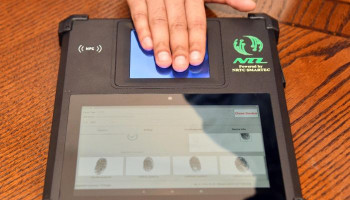
Few things on the Internet have a reputation as notorious as the Dark Web. Known for its association with cybercrime, theft, money laundering, terrorism, and human abuse, it has become the target of numerous authorities and agencies seeking to apprehend criminals and limit its usage. Ironically, the Dark Web was initially developed by the US military and later made accessible to the public for free, reported TechSpot.
What exactly is Dark Web?
The Dark Web is a network of websites that operate on an encrypted layer of the internet, making them inaccessible through standard web browsers. It is primarily accessed using Tor or I2P, networks that anonymise user data by routing it through multiple servers worldwide and encrypting it at each stage. This process, known as "onion routing," makes it difficult to trace the origin and content of the data.
Websites on the Dark Web use ".onion" or ".i2p" top-level domains and are not indexed by standard search engines, ensuring increased privacy and anonymity.
Surface web, deep web, and dark web
The internet is a global network of computers, and one of its prominent components is the World Wide Web (www). When you visit a website using a web browser, your computer requests files are hosted on a remote server located elsewhere in the world.

Numerous machines handle this process seamlessly, connecting you to the appropriate server and transferring the requested files. You can easily find websites like ours and billions of others because they are publicly accessible and indexed by search engines like Google.
This accessible portion of the web is commonly known as the Surface Web, but it represents only a small fraction of the total data available on the Internet. The remaining data, not indexed by search engines, is often referred to as the Deep Web.
The Deep Web contains relatively hidden data that is not necessarily invisible. It includes services like cloud storage, online banking, web-based email, government websites, and other agencies. Accessing this content requires knowing the exact location through a URL or IP address, and it is typically protected by passwords or payment systems for security purposes.
While the Deep Web isn't indexed, some internet users take privacy measures to an extreme level by employing highly private networks accessible only through specific software. These networks' locations and login credentials are exclusive to specific individuals.
The content hosted on these networks is collectively known as the Dark Web.
But how?
Given the accessibility of the Surface Web and a significant portion of the Deep Web, one might wonder how it is possible to completely hide a collection of servers that still connect to the Internet.
The solution lies in the use of overlay networks, which are groups of computers that communicate through another network. These networks can only be accessed using specific software, networking protocols, or exclusive authorisation.
Specific versions of these systems are often referred to as darknets and are used for various purposes, including peer-to-peer file sharing. However, merely using a darknet doesn't guarantee complete anonymity. Accessing a darknet from your home ISP account can leave a trace that leads back to you.
The Dark Web comprises multiple darknets used to host anonymous proxy networks. These networks utilise multiple servers as relays, transferring data from one machine to another and encrypting the transactions. The more relays involved, the harder it becomes to track activities within the darknet.
One of the well-known systems facilitating this is Tor, short for The Onion Router, named after the technology itself.
















